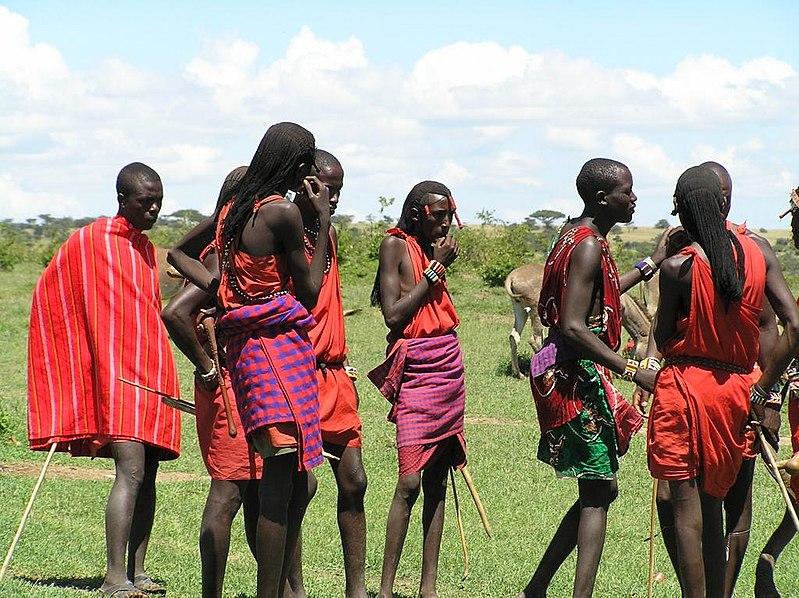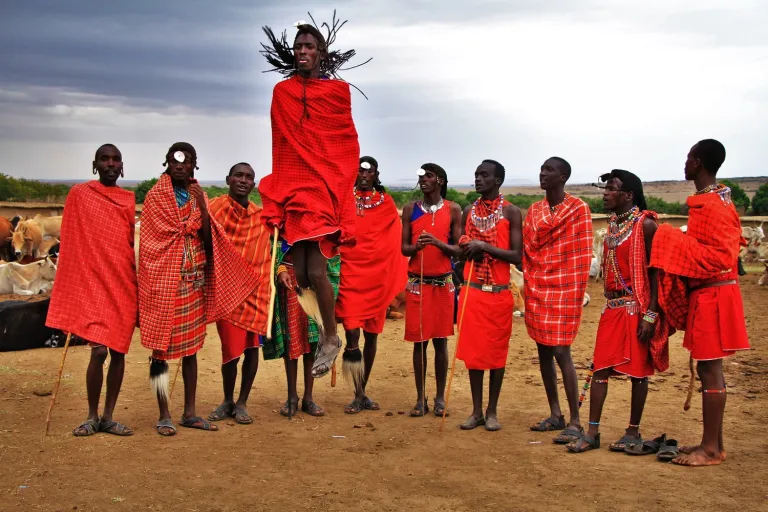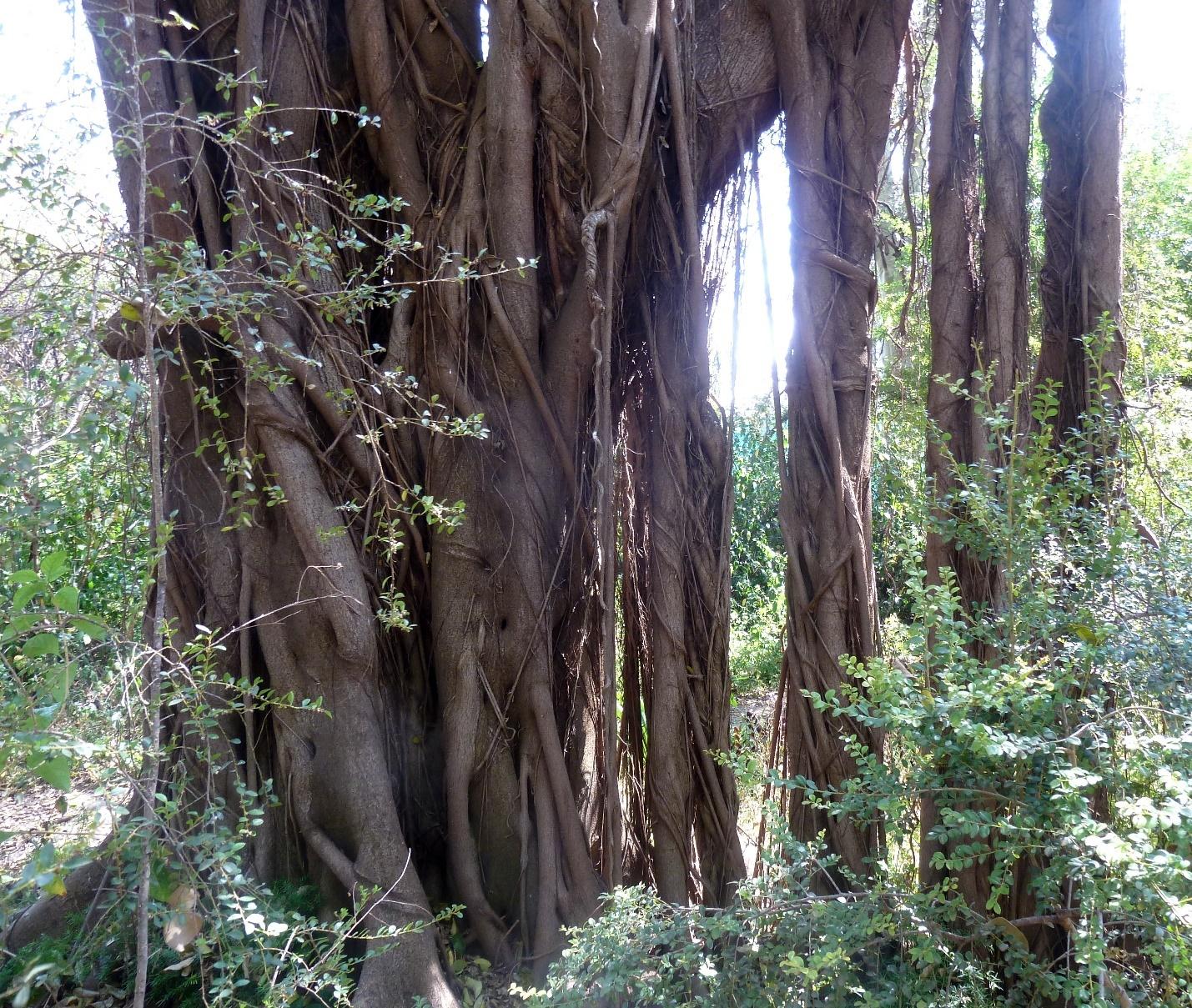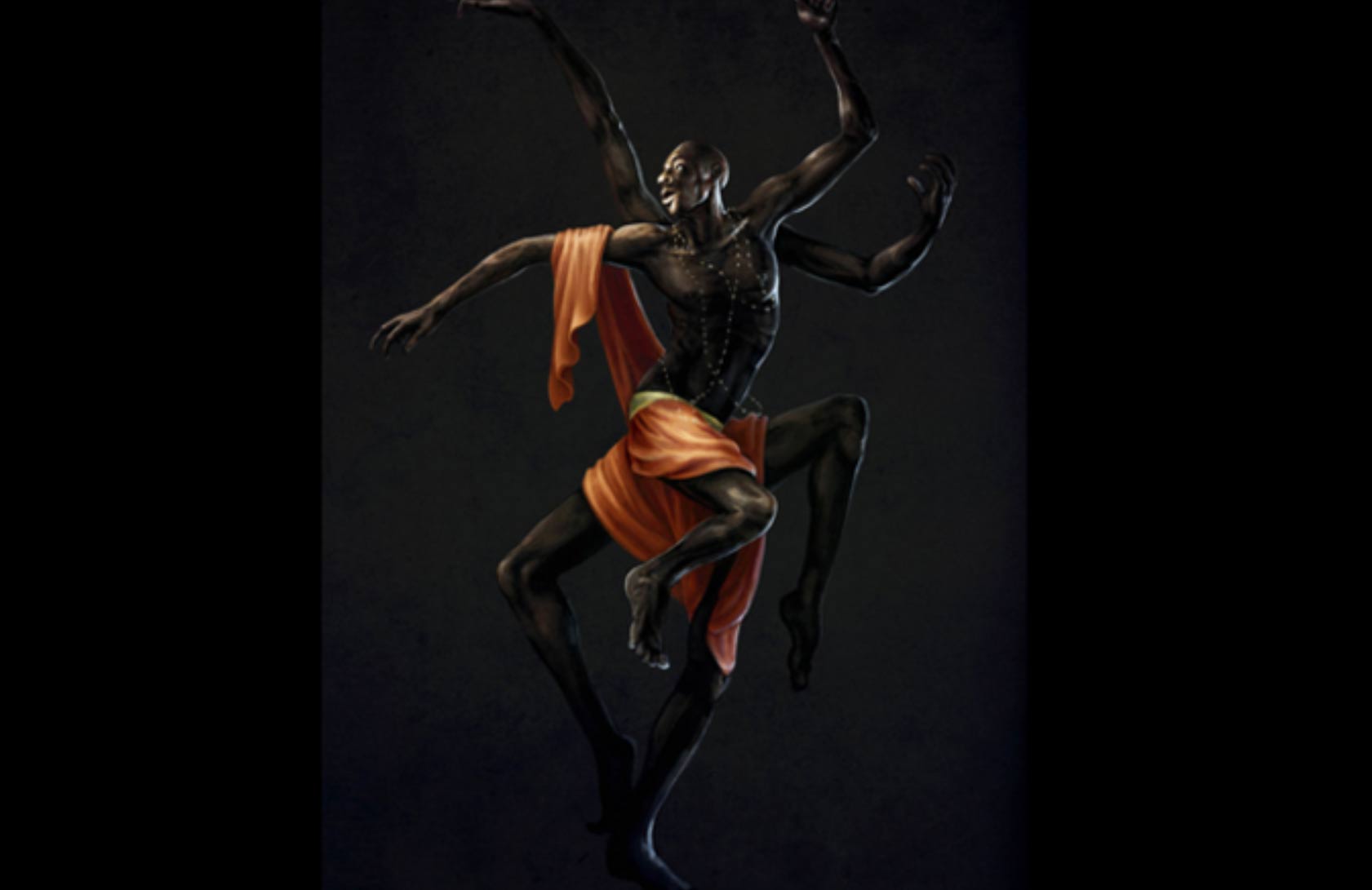
Joel Paul stated that divine intervention is the active involvement of deities in the lives of mortals. In pre-colonial Africa, religion was deeply rooted in the way of life of the African people, and it was usually centred on a supreme deity who is the overseer of everything, with the lesser deities serving as intermediaries between the supreme deity and humans. This supreme deity, often represented or seen as the sky itself and also as the creator of the universe, would appoint these lesser divinities, known to possess qualities that can influence the human world, to act as an extended helping hand. Their “helping hand” can manifest as control over human fortunes and misfortunes and is further extended when the humans seek guidance or protection through offerings and prayers.
This article is centred around the fascinating world of Maasai mythology, where the roles of deities in mortal lives take a distinct shape. But unlike most African religions that depend on the lesser deities to communicate with their supreme deity, Enkai (the supreme deity whom the Maasai people worship) plays a direct and central role in their lives. The Maasai people are monotheistic, and they are known as pastoralists, nomadic people who move from place to place in search of grazing pastures for their herds, whose beliefs are centred around their nomadic lifestyle. Their cattle are seen as sacred gifts given to them by Enkai, and as one of the most culturally visible ethnic groups often featured in the media, the Maasai culture and belief systems serve as a compelling case study to understand their divine relationship in their religion. Currently, the Maasai people reside in some parts of Kenya and the northern part of Tanzania.
Enkai and his connection with the Maasai people
The Maasai mythology begins with Enkai, a divine entity believed to be formless yet embodying the spiritual essence that emphasises his omnipresence. He is believed to have two variations: Enkai Na Nyokie (the red god) and Enkai Narok (the black god), who are sometimes described as two brothers rather than two personalities in certain Maasai mythology accounts. Enkai manifests these characteristics through the changes in the natural environment. For example, Enkai Narok (benevolent god) brings prosperity through the rains in the rainy seasons, and Enkai Na Nyokie (vengeful god) brings famine and hunger in the form of the dry environment during the dry season.
Enkai is also known as the catalyst for the Maasai people’s lifestyle. However, there are differing variations of this traditional tale that draw the line between Enkai’s favouritism and the Maasai people’s distinctive lifestyle. Some stories state that Enkai divided a tree into three parts and created the first humans: the Kikuyu, who were given the ability to farm; the Kamba, who were entrusted bows and arrows for hunting; and the Maasai, who were entrusted with the sole purpose of taking care of all the cattle in the world. The cane that is shown in the picture below was specially given to them to take care of their cattle.

Another story states that Enkai used to live with humans on earth until he decided to ascend into the sky with all the cattle. However, the cattle needed to eat grass to survive. So, he wove a tree, Ficus Natalensis, locally called Mutuba and known also as the barkcloth fig in English, and sent the animals back to earth by making them slide down the branches of the tree. The tree became a sacred object to the Maasai people, and the cattle were given to them to look after.

And yet, other variations suggest that Enkai was a human who owned all the cattle in the world. In this version, the sky and the earth were not separated initially, but when they broke apart, Enkai saw the need to weave a rope out of tree bark to send the cattle down to the Maasai people. But a group of humans, known in this version as hunters, were jealous that they received no cattle. So, they cut the rope, and a gap was formed between the earth and the sky, thereby halting the flow of cattle from the sky.
Despite the different variations in these stories, one consistent theme was made clear: the Maasai people were specially chosen by Enkai to look after his cattle. No major revelation or specific act by the Maasai was needed to secure favor from Enkai; rather, Enkai had simply chosen them, believing in their capacity to take care of the cattle. Thereby, incurring a unique blessing and forging a special relationship between Enkai and the Maasai people. This special bond contributes to the Maasai’s profound reverence for their cattle, which also supports the practice of organizing Moran (young warriors) to acquire cattle from other villages, as cattle are seen as divinely ordained possessions.
Although Enkai’s special blessings and favor initiated the Maasai’s journey, his direct intervention seemed to dwindle over the years. As time went on, Enkai was only acknowledged through the Maasai’s proud embrace of their heritage, their reverence for their cattle as extended family members, and their steadfast adherence to cultural traditions and way of life. The Maasai worshipped no other god; however, some stories appeared as a form of intervention from Enkai. These stories were not a direct intervention from Enkai; however, just as much as the Maasai have a unique religion amongst the African religions, the intervention from their god was also unique.
Many of these stories contain narratives of betrayal, jealousy, and other factors that contributed to the Maasai’s way of life. For example, there’s the story of the deception of Lenana that caused a rift between hiselder brother and him, which has become menone of the venerated stories of today due to the lesson it taught. The Maasai people are very keen when it comes to respect, especially pertaining to the elders, but according to the myth, Lenana stole the blessing meant for his elder brother, displaying a sign of disrespect. Lenana’s father, the mighty Mbatian—known as the greatest Laibon (a ritual leader of the Maasai) in Maasai history, had planned on passing the medicine man insignia to his eldest son and the rightful heir, Sendenyo (also known as Senteu).essings
In Maasai culture, the Laibon wielded the highest power and influence over the Maasai people, and although they are not regarded as political leaders, their role can be interpreted as a leadership role because of the multiple roles that they play within the tribe. Lenana knew the meaning behind being a Laibon, and he took that opportunity. As a result, his father bestowed on him the medicine man’s insignia, and after his death, the tribe broke into two factions, and war broke out. This myth doesn’t have a direct intervention by Enkai, but Enkai’s second gift to the Maasai people, the Laibon, was the catalyst that brought about the making of the story. And just like every African religion, where the will of the human is retained even though the gods had revealed a path they should follow, the choices made by Lenana were of his own free will, teaching the next generation the real meaning behind respect.
Another myth that influenced the Maasai’s way of living is the origin myth about how women came to be subservient to men. The tale began with the understanding that both men and women were equal at some point in time, and they both controlled a tribe, the women known as Moroyok. But instead of raising sheep, goats, or cows, women raised antelopes and gazelles, and they were good friends with the zebras and elephants, who helped them with specific chores like breaking branches that the women used to build their homes and corrals for their herds or transporting goods from one place to another.
The myth further goes on to say that men and women occasionally met in a forest, and their union begets children that follow the men if they are boys and vice versa. This ensures the continuity of each of their tribes. However, in Moroyok, the women were always bickering and quarrelling amongst themselves that when their herds escaped, they never took notice until there was not a single herd remaining. Their animal friends also left them because even they felt like they couldn’t satisfy the women with their work. After this calamity befell them, the women had no choice but to ask the men if they could live with them. From that time onwards, the women were subject to the men’s authority, which explains the Maasai’s patriarchal society. This origin story taught women in Maasai society to be content with what they have while also highlighting the women's actions that led to their collapse.
Another myth would be one between Enkai and his wife, Olapa, the moon goddess. Although it doesn’t hold much relevance, Olapa was jealous when she caught her husband staring at the beautiful stars. She had injured him in her rage, and he took out her eyes after he was wounded. Legend says that her lack of eyes may be noticed when the moon is full (the moon's craters on its surface), and that Enkai prevents others from seeing his wound by enhancing the brightness around him (the glare of the midday sun). These two illumination elements are seen as objects that are quite beneficial for the Maasai: the full moon as a beacon of light in the dark and the midday sun during the day. Stories like this shaped the moral fibre and the fortitude of the Maasai people, and from these stories, the Maasai people were able to live based on the lessons and the beliefs that were given to them by their ancestors and Enkai.
Understanding the divine intervention of the Maasai
In most cultures, divine intervention typically contains well-defined elements such as punishment, revenge, prosperity, or blessings; however, in the Maasai cosmos, these elements are not as obvious as the underlying meanings they convey. For example, Amadioha (Igbo mythology) is a god known for punishing evil doers, but in Maasai mythology, specific criteria are only revealed in the long run after an action has been committed. This can be seen in the following:
1. Enkai as a god of creation, sustenance, and fury
Enkai is seen generally as the creator of the world, but the Maasai have always seen him as the god who chose them specifically. He had given them cattle, and his actions from then on were seen to be beneficial to the Maasai. As a benevolent god, he sent down rain for their sustenance and their cattle’s, but as a vengeful god, he would send down drought, hunger, and disease, which occur only when there’s wrongdoing in the community. This was Enkai’s direct intervention with the Maasai people.
2. Enkai’s gift of guidance in the form of the Laibon
The Laibon is a spiritual leader who serves as an intermediary between Enkai and the Maasai people. Whenever there’s a decision to make regarding warfare or moving grazing grounds, the Laibon is consulted.
3. Enkai’s method of teaching lessons
The only direct role that Enkai played was gifting the Maasai people cattle. Following that, he granted the people of Maasai freedom to live however they choose, which resulted in both mischief and good. Stories like Lenana and the problem with the Moroyok tribe had overtly taught the Maasai people lessons that they can never forget. For example, the elders are careful not to repeat the same mistake that happened with Lenana by making sure each person within a specific age group shows respect for the age group above them.
4. Enkai as a god of unintentional blessings
In myths, such as when Enkai had to conceal his wound by increasing the brightness surrounding it, he was able to successfully provide the Maasai with the gift of daylight. It was not a direct intervention, but its success did not cast the world into darkness, implying that Enkai was unconcerned about the gift it bestowed upon the Maasai.
The Maasai people may not have a lot of direct contact with their god, but they can tell you that they’ve learnt a lot from the little things he’s provided for them along their way.
Reference
- Crusader1307, "Olapa," Stronghold Nation, accessed July 29, 2025, https://www.strongholdnation.com/forums/topic/1359-olapa-ancient-gods/
- Divine Intervention: African Art and Ritual, Michael C. Carlos Museum, Atlanta, GA, January 1–December 31, 2011.
- "Ficus natalensis," Wikipedia, last modified July 21, 2025, https://en.wikipedia.org/wiki/Ficus_natalensis
- Fiveable, "14.3 African Traditional Religions – World Religions," Fiveable, 2024, accessed July 20, 2025, https://library.fiveable.me/hs-world-religions/unit-14/african-traditional-religions/study-guide/mhdBmSwCHXhrn5qK
- Joel Paul, "Divine Intervention in Mortal Conflicts: Exploring the Role of Gods in Mythological Storytelling," ResearchGate, November 2024, https://www.researchgate.net/publication/385594489
- "Maasai," Africa 101 Last Tribes, accessed July 30, 2025, https://www.101lasttribes.com/tribes/maasai.html
- “Maasai Gods," Mythlok, https://mythlok.com/gods/african-gods/east-african-gods/maasai-gods/
- "Maasai people," Wikipedia, last modified July 14, 2025, https://en.wikipedia.org/wiki/Maasai_people
- "Maasai Tribe," Maasai Mara Travel, https://www.masaimara.travel/maasai-tribe-facts.php
- "Mbatian," Wikipedia, last modified May 28, 2025, https://en.wikipedia.org/wiki/Mbatian
- Mike Ushe Ushe, "GOD, DIVINITIES AND ANCESTORS IN AFRICAN TRADITIONAL RELIGIOUS THOUGHT," IGWEBUIKE: An African Journal of Arts and Humanities 3, no. 4 (June 2017): 154 – 179.
- TalkAfricana. "The Creation Story of the Maasai People of East Africa." African Art and Crafts (blog). TalkAfricana, June 27, 2020. https://talkafricana.com/the-creation-story-of-the-maasai-people-of-east-africa/
Join the Oriire Community
Become a free member to get the monthly roundup, comment on articles and bookmark your favourites





















Share
0 Comments